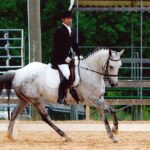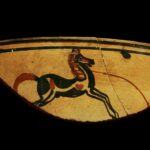Horse racing, an ancient sport dating back thousands of years, has evolved into one of the most exhilarating spectacles in the world of athletics. While every race carries its own tension and excitement, certain equestrian competitions stand out for their extraordinary demands on both horse and jockey. These remarkable races push the boundaries of endurance, speed, and courage, often taking place in extreme conditions or requiring exceptional skill to navigate treacherous courses. From century-old traditions to modern high-stakes competitions, the most intense horse races combine athletic prowess with cultural significance, creating unforgettable moments that captivate millions of spectators worldwide. Whether testing stamina over grueling distances or challenging competitors with heart-stopping obstacles, these races represent the pinnacle of equestrian achievement and showcase the remarkable partnership between humans and horses.
The Grand National: England’s Ultimate Test of Courage

Held annually at Aintree Racecourse near Liverpool, the Grand National is widely regarded as one of the most challenging steeplechase events in the world. The daunting 4.5-mile course features 30 formidable fences, including the infamous Becher’s Brook, which has earned a reputation as one of the most hazardous jumps in horse racing due to its 6-foot-9-inch drop on the landing side. Only about one-third of starting horses typically complete the race, with falls, unseated riders, and refusals being common throughout the grueling competition. Since its inauguration in 1839, the Grand National has become not just a sporting event but a British cultural institution, drawing an estimated global television audience exceeding 500 million viewers who watch in anticipation as horses and riders test their limits of endurance and bravery.
The Palio di Siena: Medieval Chaos in Modern Times

Twice each summer, the historic Piazza del Campo in Siena, Italy transforms into one of the world’s most unusual and dangerous racecourses for the Palio di Siena. Ten horses and riders, representing different city wards or contrade, compete bareback on a track covered with packed dirt, navigating treacherous turns at breakneck speeds while surrounded by thousands of spectators. The race consists of just three laps around the piazza, lasting approximately 90 seconds, but the intensity is unparalleled as jockeys use tactics that would be illegal in conventional racing – including whipping rival horses and riders. Dating back to the medieval era, the Palio transcends sport to become a passionate expression of neighborhood pride, with elaborate ceremonies and traditions preceding the race that reflect centuries of Sienese culture and rivalry.
The Mongol Derby: The World’s Longest Horse Race

Covering an astounding 1,000 kilometers (621 miles) across the Mongolian steppe, the Mongol Derby has earned its reputation as the world’s longest and toughest horse race. Inspired by Genghis Khan’s ancient horse messenger system, participants must navigate this punishing course over 7-10 days, changing semi-wild Mongolian horses every 40 kilometers at stations modeled after the historic postal relay system. Riders face extreme weather conditions ranging from scorching heat to freezing rain, while navigating unmarked terrain using GPS technology, and often sleeping under the stars or with nomadic families along the route. The physical toll is immense, with dehydration, hypothermia, broken bones, and severe saddle sores common challenges, making completion of this extreme endurance event a remarkable achievement claimed by only the most determined competitors.
The Velká Pardubická: Eastern Europe’s Steeplechase Legend

Since 1874, the Velká Pardubická has challenged the world’s most courageous horses and riders with a punishing 6.9-kilometer course featuring 31 obstacles, making it one of the oldest and most demanding steeplechases in existence. The race, held in Pardubice, Czech Republic, includes the notorious Taxis Ditch, a 1.5-meter-high hedge with a 4-meter-wide and 1-meter-deep ditch on the landing side, which has claimed the lives of several horses throughout the event’s history and earned it the ominous nickname “The Destroyer.” What distinguishes this race is not only its difficult obstacles but also the varied terrain, including plowed fields, woodland paths, and sandy tracks that horses must navigate at high speeds. The Velká Pardubická’s reputation for danger and difficulty has made it a proving ground for exceptional equestrian talent, with only the most skilled combinations of horse and rider capable of conquering its challenges.
The Kentucky Derby: The Most Intense Two Minutes in Sports

Known as “The Most Exciting Two Minutes in Sports,” the Kentucky Derby represents the pinnacle of thoroughbred racing in the United States and kicks off the prestigious Triple Crown series. The Derby’s intensity stems not from extreme distance or dangerous obstacles, but from the extraordinary pressure placed on three-year-old thoroughbreds to perform at their absolute peak during the 1.25-mile race at Churchill Downs in Louisville, Kentucky. With purses now exceeding $3 million and a global audience of millions, jockeys and horses must navigate a 20-horse field—significantly larger than most elite races—creating dangerous traffic conditions as they thunder around the track at speeds approaching 40 miles per hour. The Derby’s unique combination of youth (horses competing are essentially teenagers in equine development), distance (longer than most have previously raced), massive crowds exceeding 150,000 spectators, and the weight of a 147-year tradition creates an atmosphere of unparalleled pressure and intensity.
The Birdsville Races: Australia’s Outback Racing Challenge

Every September, the remote town of Birdsville in Queensland, Australia—with a typical population of just 115 people—transforms as over 7,000 visitors descend upon it for one of the most isolated thoroughbred racing events on earth. The Birdsville Track, a notorious 517-kilometer stock route through the forbidding Simpson Desert, becomes the pathway for horses and spectators alike to reach this remarkable two-day racing carnival. The challenging desert conditions create a uniquely demanding environment, with temperatures regularly exceeding 40°C (104°F), frequent dust storms, and a track composed of red desert sand that tests horses accustomed to more conventional surfaces. Beyond the physical challenges, the logistical feat of transporting valuable racehorses across hundreds of kilometers of harsh outback terrain adds another dimension of difficulty, with some competitors traveling over 2,000 kilometers to participate in what has become an iconic celebration of Australian outback culture and horsemanship.
The Naadam Festival Horse Race: Mongolia’s Child Jockeys

During Mongolia’s annual Naadam Festival, a centuries-old celebration of the “three manly sports” (wrestling, archery, and horsemanship), one of the world’s most unusual horse races takes place across the vast Mongolian steppe. What makes these races particularly remarkable is that the jockeys are children, typically between 6 and 12 years old, who ride across courses ranging from 15 to 30 kilometers without saddles, demonstrating extraordinary skill and courage. Riding native Mongolian horses—small but incredibly tough animals adapted to the harsh continental climate—these young riders face extreme challenges including unpredictable weather that can rapidly shift from intense heat to hailstorms. The races are categorized by the age of the horses rather than the riders, with the most prestigious being the Ikh Nas (for 6-year-old horses), and success in these events brings tremendous honor to the child’s family and community, continuing traditions that date back to the era of Genghis Khan.
The Dubai World Cup: Racing in the Desert Heat

With a purse of $12 million, the Dubai World Cup stands as one of the richest horse races in the world and presents unique challenges that test the limits of thoroughbred performance. Held at the Meydan Racecourse in the United Arab Emirates, horses must contend with the punishing desert climate where temperatures can exceed 100°F (38°C), creating extreme physiological stress even with races scheduled for evening hours. The international nature of the event means many horses must travel thousands of miles and adapt quickly to dramatically different environmental conditions, while trainers implement specialized hydration and cooling protocols to prevent heat-related performance decline. Since its inauguration in 1996, the race has attracted the world’s elite thoroughbreds to compete on its synthetic or dirt surface over a distance of 2,000 meters (approximately 1.25 miles), combining the pressure of an enormous purse with the physical challenge of peak performance in desert conditions to create one of racing’s most intense tests.
The Nakizumo Baby Crying Sumo Festival: Japan’s Unusual Infant Competition

In a dramatic departure from traditional horse racing, the Nakizumo Baby Crying Sumo Festival in Japan features a unique “race” where babies born in the previous year compete not on horseback but in the arms of sumo wrestlers to see which infant will cry first or loudest. Believed to bring good health and ward off evil spirits, this centuries-old tradition takes place at shrines across Japan, with the most famous held at Tokyo’s Sensoji Temple. The babies, dressed in ceremonial outfits, are held aloft by sumo wrestlers who gently bounce and jostle them, while priests stand nearby making faces and noises to encourage crying. If gentle encouragement fails, masks may be used to frighten the babies into tears, with the first to cry declared the winner in a belief that “crying babies grow faster.” While not a horse race in the literal sense, this cultural competition represents Japan’s diverse approach to traditional sporting events and ceremonial races.
The White Turf: Racing on a Frozen Swiss Lake

Every February since 1907, the frozen surface of Lake St. Moritz in Switzerland transforms into one of the world’s most unusual racecourses for the White Turf festival, combining traditional flat racing with the unique sport of skijoring. During skijoring events, daring competitors on skis are pulled behind thoroughbred racehorses at speeds exceeding 50 kilometers per hour (31 mph), navigating a 2,700-meter course while maintaining balance and control without the benefit of poles or other equipment. The races take place on a meticulously prepared track with ice approximately 40-60 centimeters thick, though changing climate conditions have occasionally forced cancellations when the ice surface failed to reach safe thresholds. Beyond the physical challenges, horses must adapt to running on snow rather than dirt or turf, requiring special training and modified racing plates (horseshoes) with tungsten carbide studs to provide traction on the slippery surface, creating a spectacle that combines elite horsemanship with alpine sporting tradition against the breathtaking backdrop of the Swiss Alps.
The Omak Suicide Race: America’s Most Controversial Horse Race

Each August during the Omak Stampede rodeo in Washington state, a highly controversial race takes place that many consider the most dangerous organized horse event in the United States. Known as the Suicide Race, this event requires horses and riders to charge down Suicide Hill—a 62-degree slope dropping more than 225 feet—before plunging into the Okanogan River and swimming across to the finish line on the opposite bank. The entire race covers less than half a mile but presents extraordinary dangers in its brief duration, with horses reaching speeds of up to 40 miles per hour during the descent. Promoted as a continuation of Native American traditions and dating back to the 1930s, the race has faced intense criticism from animal welfare organizations who point to numerous horse fatalities and injuries over the years. Despite the controversy, participants—many from local Native American tribes—view the race as an important cultural tradition and demonstration of exceptional horsemanship and courage in the face of extreme challenge.
The Chilean Rodeo: South America’s National Sport

Although not a race in the traditional sense, Chile’s national sport of rodeo represents one of the most physically demanding equestrian competitions in South America. Two riders mounted on specially trained Chilean horses known as “Caballos Chilenos” work as a team to pin a steer against a padded wall in a crescent-shaped arena called a medialuna, with points awarded for precision, control, and technique. The horses must demonstrate extraordinary agility, strength, and responsiveness as they press their chests against the 900-pound steers while moving at considerable speed, requiring years of specialized training. The most prestigious championship, known as the Campeonato Nacional de Rodeo, takes place annually in Rancagua and attracts the finest horse-and-rider combinations from across the country. Unlike North American rodeo, Chilean rodeo emphasizes horsemanship over speed, though the physical demands placed on both horse and rider—including rapid acceleration, tight turns at high speeds, and the considerable force required to control the steer—make it one of the most intense equestrian sports in the world.
The Melbourne Cup: Australia’s Race That Stops a Nation

First run in 1861, the Melbourne Cup has evolved from a local horse race into a cultural phenomenon that literally halts daily activities across Australia, earning its nickname as “the race that stops a nation.” Held annually on the first Tuesday of November at Flemington Racecourse, this grueling 3,200-meter (approximately two-mile) handicap race tests horses’ stamina and endurance far beyond most elite flat races, creating a unique challenge that attracts competitors from around the world. The handicap nature of the race, where superior horses carry more weight in an attempt to equalize the field, adds another dimension of difficulty, with top performers sometimes carrying up to 10 kilograms (22 pounds) more than lower-rated entries. The immense pressure associated with this national event—which commands a public holiday in its home state of Victoria and attracts a crowd of over 100,000 spectators—creates psychological intensity matched by few other sporting events, with the $8 million prize purse adding to the stakes for owners, trainers, and jockeys who target this race as the ultimate achievement in Australian thoroughbred racing.
Conclusion

The world’s most intense horse races represent far more than sporting competitions—they embody cultural heritage, push the boundaries of human and equine partnership, and showcase the extraordinary capabilities of these magnificent animals. From the perilous leaps of the Grand National to the endurance-testing expanses of the Mongol Derby, these events captivate us not just through their spectacle but through the courage, skill, and determination they demand. While controversy sometimes surrounds the more dangerous races, they continue to evolve with improved safety measures while maintaining their essential character. Whether racing across frozen lakes, navigating ancient city squares, or thundering down prestigious tracks, these competitions remind us of humanity’s enduring connection with horses and our shared capacity for extraordinary achievement in the face of extreme challenge. For competitors and spectators alike, these races represent the ultimate expression of the timeless bond between humans and horses that has shaped civilizations throughout history.







